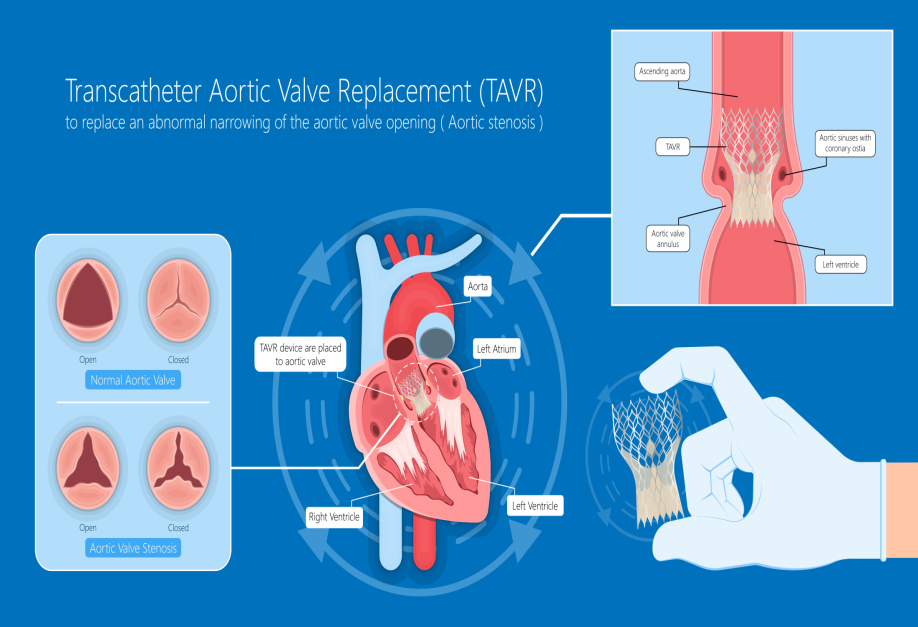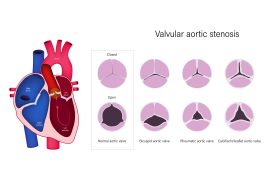Studies show that heart disease is the leading cause of death worldwide. And, aortic stenosis is the most common valvular heart disease and the third most common cardiovascular disease after hypertension and coronary artery disease in the western world. It is also often referred to as a disease of the elderly however a lot of young adults have also been diagnosed with aortic stenosis. The disease can occur in a single valve or in a combination of the four valves. Usually, aortic stenosis is most common in heart’s aortic valve and mainly occurs due to the buildup of calcium deposits that narrows the valve. When it comes to the treatment for aortic stenosis, it completely depends on the severity of the patient’s condition. Suggesting a valve replacement surgery or advising patients with medication and lifestyle changes completely depends on the doctor. But, it is important to understand that no pill can cure aortic stenosis completely but there are few medications that may help in lowering down the risk and complications involved. Let us now look at the treatment choices available for treating aortic stenosis along with its cost in India.
Treatment of Aortic Stenosis
Aortic stenosis is a progressive disease, which means it will get worse with time. Due to this, aortic stenosis is measured as mild, moderate, or severe stages depending on how damaged your aortic valve is. Treatment options for aortic stenosis generally range from simple medications such as statins or surgical repair or replacement of the diseased aortic valve. No pill can cure aortic stenosis, but medication like statins can help you lower your cholesterol which can control your symptoms and lower the risk of heart attack and stroke for some time. However, anyone with aortic stenosis should be checked with an echocardiogram to determine treatment options. Although, medication may be appropriate only for a person for whom surgery is not an option or for someone who’s aortic valve condition is in a very mild stage without any major visible symptoms.



In most of the cases, aortic stenosis treatment requires surgical treatment to protect the heart from further damage. Generally, surgery for aortic stenosis treatment depends on each patient’s unique requirements and factors responsible for their condition. Two of such major surgical treatment options for aortic stenosis include aortic valve replacement and Balloon/surgical Aortic Valvuloplasty (BAV).
- Aortic valve replacement: In this procedure, your diseased aortic valve will be replaced with the mechanical valves made of metal or with valve tissue from pigs, cows or human donors using traditional open-heart surgery or Transcatheter Aortic Valve Replacement (TAVR). Undergoing a TAVR surgery is a better treatment option as it is a minimally invasive procedure involves placement of a new valve over the patient’s diseased valve via a catheter inserted through the femoral artery and hence result in quicker recovery post procedure enabling the patients to go back to their normal lives.
- Balloon/surgical valvuplasty (BAV): It is a less invasive procedure because it is done by inserting a long flexible tube with a deflated balloon on its tip into the blood vessel from the groin. When the tip reaches the valve, the balloon is inflated which helps to open up the stenotic or stiffed heart valves and increase the blood flow through the heart.



Why consider India for aortic stenosis treatment?
According to doctors, aortic stenosis treatment in India can be obtained at highly economical rates as compared to the Western world. Due to low treatment cost and a high level of expertise for cardiac diseases including aortic stenosis, India has become a leading destination for medical tourism in the world. Generally, the treatment cost for aortic stenosis in India depends upon multiple factors such as the selected treatment procedure, used technology, the severity of the disease, location, pre- and post-operative care demanded and other selected services. However, irrespective of any procedure selected for aortic stenosis treatment such as a SAVR, TAVR or balloon valvuplasty, the cost is less than the hospitals in western countries. People visiting India for treatment are not only from neighbouring countries like Bangladesh, Afghanistan and Nepal but also from far off countries like Kenya, Nigeria, Iraq, Yemen, Kazakhstan, Iran, Uganda and Oman. In India, aortic stenosis treatment is preferably carried out at a number of well-renowned multi-specialty and super-specialty hospitals located across a number of metropolitan cities of India such as Mumbai, Delhi, Chennai, Hyderabad, Pune, etc. These hospitals offer world-class facilities and doctors who are well-versed in performing these surgeries, even in the most challenging situations.
According to global standards, the cost of aortic stenosis treatment in India ranges from a few thousand rupees a month. As per an estimate of 2016, the mean cost for TAVR procedure in the US were 69,592$ vs 58,332$ for SAVR. As compared to these estimates, TAVR cost in India is roughly half (34,900$) to that of the US hospitals. In simpler terms, the cost of TAVR surgery in India is estimated to be 18 to 20 lakhs which is 3 times lower versus any hospital in the western world.
These numbers along with the quality of treatment provided in India and effectiveness of TAVR are clearly responsible for a spike in the numbers of international patients. This means that the trend has clearly changed in the past decade in terms of treating a faulty valve and allowing individuals to live those additional years with greater quality of life or in an improved health state.




